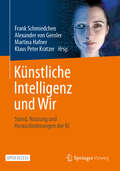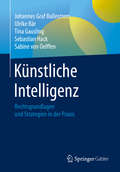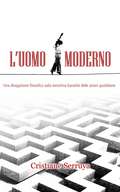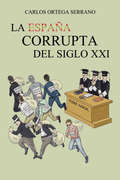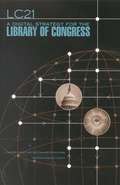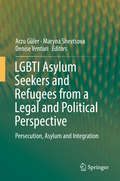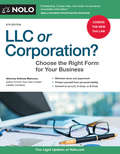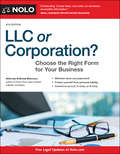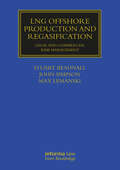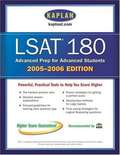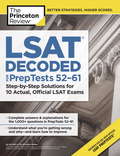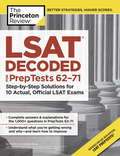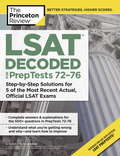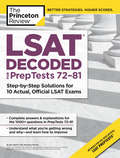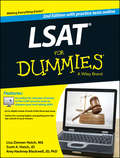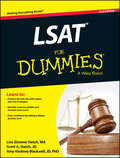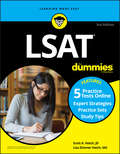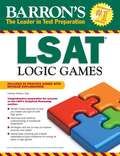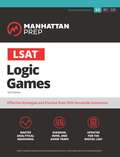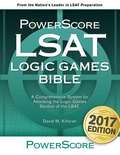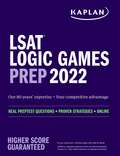- Table View
- List View
Künstliche Intelligenz und Wir: Stand, Nutzung und Herausforderungen der KI
by Frank Schmiedchen Alexander Von Gernler Martina Hafner Klaus Peter KratzerDieses Open Access Buch bietet einen umfassenden Überblick über den aktuellen Stand der Technikentwicklung und die zukünftigen Möglichkeiten der Künstlichen Intelligenz (KI). Experten aus verschiedenen Disziplinen beleuchten die vielfältigen Aspekte der KI, von technischen Grundlagen über ethische Fragestellungen bis hin zu gesellschaftlichen und wirtschaftlichen Auswirkungen. Das Buch wendet sich an Lehrende und Lernende an deutschsprachigen Hochschulen und kann als Lehrbuch außerhalb der Informatik verwendet werden. Zu den Herausgebern gehören der Wirtschaftswissenschaftler Frank Schmiedchen, der seit 2017 die Studiengruppe Technikfolgenabschätzung der Digitalisierung der Vereinigung Deutscher Wissenschaftler leitet, der ehemalige Vizepräsident der Gesellschaft für Informatik Alexander von Gernler, der Abteilungsleiter Research und Innovation der genua GmbH ist, die Wirtschaftsinformatikerin Martina Hafner, die bei der genua GmbH als Innovationsmanagerin arbeitet, und Klaus Peter Kratzer, der Professor für Informatik an der Technischen Hochschule Ulm war.
Künstliche Intelligenz: Rechtsgrundlagen und Strategien in der Praxis
by Sebastian Hack Johannes Graf Ballestrem Ulrike Bär Tina Gausling Sabine von OelffenAutonomes Fahren, Maschinelles Lernen, Big Data – Im Zuge der Digitalisierung rückt Künstliche Intelligenz (KI) zunehmend in den Fokus unternehmerischer Tätigkeit. Durch KI erzeugte Datensätze und -analysen stehen im Mittelpunkt der Wertschöpfung. Gleichzeitig müssen Entscheider*innen in Unternehmen und Digitalabteilungen die rechtlichen Implikationen der neuen Technologie verstehen: Wie sieht der rechtliche Rahmen für die Beschaffung von Daten mittels KI aus? Welches Haftungsregime gilt für den Einsatz von KI und inwieweit kann die Haftung wirksam beschränkt werden? Wie kann die eigene Wertschöpfungskette vor unberechtigten Zugriffen Dritter geschützt werden? Kann eine konzerninterne Verwertung Steuern auslösen?Dieses Buch gibt Unternehmen einen fundierten und praxisorientierten Einblick in die rechtlichen Möglichkeiten und Grenzen des Einsatzes von KI. Ein Autorenteam aus erfahrenen Rechtsanwält*innen erklärt und zeigt anhand von Erfahrungsbeispielen Strategien und Lösungsmöglichkeiten im Umgang mit KI auf. Das Buch richtet sich (auch) an juristische Laien.
L'uomo moderno
by Annarita Tranfici Cristiane SerruyaLo stato moderno dell'uomo, la sua vita, i suoi pensieri e i suoi sentimenti sono stati analizzati dall'autrice con uno stile poetico, diretto e sensibile. Un testo contemporaneo che indaga sulle angosce e sui desideri dell'uomo moderno, sui suoi bisogni e progetti, sui suoi sogni e sulle sue utopie,e che invita il lettore a ripensare alle sue azioni quotidiane. Prefazione a cura di Carla Francalanci, Dottore di ricerca in Filosofia presso il Boston College. - Medaglia d'oro nella categoria "Scritti motivazionali per giovani adulti" concessa dalla prestigiosa istituzione "Literary Classic International Book Award and Review", 2013. - Medaglia di bronzo nella categoria "Saggistica - Racconto breve"; Finalista al Book Award nella categoria "Saggistica - Racconto breve - Religione/Filosofia", tutti assegnati dal "Readers' Favorite International Book Award", 2013. - Menzione d'onore dalla Facoltà di Giurisprudenza della Pontifícia Universidade Católica do Rio de Janeiro, 1988.
LA ESPAÑA CORRUPTA DEL SIGLO XXI
by Carlos Ortega SerranoLa España corrupta del siglo XXI es un libro que emerge de la oscuridad con casos de corrupción política ocultos hasta ahora. La España corrupta del siglo XXI es un libro en el cual el autor plasma con total transparencia y llamando a las cosas por su nombre, muchas de las informaciones mediáticas, como también de las experiencias vividas del escritor sobre la corrupción que asola y atraviesa la nueva España democrática, la cual necesita con urgencia una regeneración total de esta enfermedad cancerígena que han implantado individuos tóxicos y corruptos, los cuales quieren seguir propagando la misma por los cuatro puntos cardinales de la geografía española. No es de extrañar la crisis en la que está sumergida esta nación, la cual está siendo saqueada sin escrúpulo alguno por muchos de sus políticos, banqueros y otros.
LARB Digital Editions: The Law Issue
by Frank Gruber Barry A. Sanders Jonathan Shapiro Jim Lafferty Don FranzenA collection of essays on the topic of the law and legal affairs, selected in order to give readers samples of the ways in which the subject of law relates to the study of ourselves and our times. Those included in this publication are just a sample of the books reviewed over the last year and a half - reviews that cover a variety of topics, some very current, some historical and some dealing with debates spanning centuries.A review of Judge Wilkinson's Cosmic Constitutional Theory surveys the leading theories of the Constitution and how to interpret it. Two equally brilliant and contrasting views on the meaning of our nation's founding document are provided through interviews with Justice Antonin Scalia and Yale Law Professor Akhil Reed Amar. Between these three pieces, the reader will find a sharp debate as to whether a literal reading or a living interpretation of the document should govern our age.Also included is a thoughtful treatment of the macroeconomic disconnect between the numbers of new lawyers churned out by our educational system and the market for these new entrants. To see how far we've come since the first women sought admission to the bar, read a review of Jill Norgren's Rebels at the Bar: The Fascinating, Forgotten Stories of America's First Women Lawyers.The articles featured in this publication, by the breadth of the issues they survey, show rather that the law is a rich bed of moral inquiry, an all too true reflection of our times and ourselves.
LC21: A Digital Strategy for the Library of Congress
by National Research CouncilDigital information and networks challenge the core practices of libraries, archives, and all organizations with intensive information management needs in many respects-not only in terms of accommodating digital information and technology, but also through the need to develop new economic and organizational models for managing information. LC21: A Digital Strategy for the Library of Congress discusses these challenges and provides recommendations for moving forward at the Library of Congress, the world's largest library. Topics covered in LC21 include digital collections, digital preservation, digital cataloging (metadata), strategic planning, human resources, and general management and budgetary issues. The book identifies and elaborates upon a clear theme for the Library of Congress that is applicable more generally: the digital age calls for much more collaboration and cooperation than in the past. LC21 demonstrates that information-intensive organizations will have to change in fundamental ways to survive and prosper in the digital age.
LGBTI Asylum Seekers and Refugees from a Legal and Political Perspective: Persecution, Asylum and Integration
by Arzu Güler Maryna Shevtsova Denise VenturiThis book addresses the ‘three moments’ in lesbian, gay, bisexual, transgender and intersex (LGBTI) asylum seekers’ and refugees’ efforts to secure protection: The reasons for their flight, the Refugee Status Determination process, and their integration into the host community once they are recognized refugee status.The first part discusses one of the most under-researched areas within the literature devoted to asylum claims based on sexual orientation and gender identity, namely the reasons behind LGBTI persons’ flight. It investigates the motives that drive LGBTI persons to leave their countries of origin and seek sanctuary elsewhere, the actors of persecution, and the status quo of LGBTI rights. Accordingly, an intersectional approach is employed so as to offer a comprehensive picture of how a host of factors beyond sexual orientation/gender identity impact this crucial first stage of LGBTI asylum seekers’ journey.In turn, the second part explores the challenges that LGBTI asylum seekers face during the RSD process in countries of asylum. It first examines these countries’ interpretations and applications of the process in relation to the relevant UNHCR guidelines and questions the challenges including the dominance of Western conceptions and narratives of sexual identity in the asylum procedure, heterogeneous treatment concerning the definition of a particular social group, and the difficulties related to assessing one’s sexual orientation within the asylum procedure. It subsequently addresses the reasons for and potential solutions to these challenges.The last part of the book focuses on the integration of LGBTI refugees into the countries of asylum. It first seeks to identify and describe the protection gaps that LGBTI refugees are currently experiencing, before turning to the reasons and potential remedies for them.
LGBTQI Inclusivity, Homosexuality, and Same-Sex Marriage in the Catholic Church: Pope Francis’s Synodal Theology, Sociology, and Moral Issues
by Vivencio O BallanoThis book employs an experimental approach to critically re-examine the Catholic Church’s traditional teachings on homosexuality, heterosexual marriage, and Lesbian, Gay, Bisexual, Transgender, Queer, and Intersexual (LGBTQI) inclusivity in light of Pope Francis’s inductive synodal theology and modern sociology. With the growing complexity of today’s culture and the advancement of social science research, it argues that the empirical foundations of the traditional Church’s doctrines on topical moral issues need to be scientifically re-assessed, so as to update them in view of Francis’s synodality and sociological research on gender, sexuality, and same-sex union. Discussion pertaining to whether homosexuality is naturally disordered and whether heterosexuality is the only criterion for Christian marriage remain lingering empirical issues in the Church that require a sociological and inductive synodal analysis, rather than the traditional deductive philosophical and theological method that is largely based on natural law theory. This topical book is of appeal to scholars and students of sociology, theology, as well as religious, biblical, and gender studies.
LLC or Corporation?: Choose the Right Form for Your Business
by Anthony MancusoChoose the legal entity with the best legal and tax advantages Whether you are starting a new business or thinking about an existing one, the big question is "which legal structure is best?" The answer has important legal and tax consequences. LLC or Corporation? explains: the basics of all business entities why sole proprietorships and partnerships are usually a poor choice how to avoid being personally liable for business debts how profits and losses are taxed in all business entities how to convert from one business entity to another, doing business beyond your state. Making the right choice will affect your bottom line in many ways -- from what you pay in taxes to your ability to seek money from investors. LLC or Corporation? is packed with real-world examples to help you make the best choice for your company.
LLC or Corporation?: Choose the Right Form for Your Business
by Anthony MancusoLLC vs. C-Corp vs. S-Corp: The most important business decision you’ll make Whether you are starting a new business or thinking about an existing one, the big question is “Which legal structure is best?” The answer has important legal and tax consequences. LLC or Corporation? explains: the basics of all business entities why sole proprietorships and partnerships are usually a poor choice how to avoid being personally liable for business debts how to pay less tax by choosing the right entity how to convert from one business entity to another, and requirements for doing business out of state. LLC or Corporation? is packed with real-world examples to help you make the best choice for your company. The 9th edition is updated with COVID-related information for small businesses.
LNG Offshore Production and Regasification: Legal and Commercial Risk Management (Maritime and Transport Law Library)
by John Simpson Stuart Beadnall Max LemanskiThis is the first book to focus on the law and practice relating to the production and delivery of liquified natural gas (LNG) using offshore floating facilities. This segment of the offshore oil and gas industry has been growing over recent years and has now assumed special importance in the wake of interruption to international gas supplies, with a number of countries turning to importing LNG through floating offshore regasification units in order to protect their energy security. The reader will gain a thorough understanding of the operational risks as far as these are relevant to contractual obligations and potential liabilities.The book draws on the relevant maritime and commercial law, applying this with specific focus on the requirements of offshore facilities liquefying, carrying and storing a cargo at −162°C, then regasifying and transferring the same onshore. The contracts relating to the operation of these facilities mirror some aspects of conventional LNG vessel charters but include important additional features specific to offshore LNG operations. The discharge of LNG from a sea-going vessel into a receiving floating, storage and regasification unit (FSRU) (and the storage and regasification of LNG into the receiving pipeline) may be problematic and lead to significant commercial consequences if there is underperformance. The allocation of related risks as between the LNG owner and the FSRU operator and other interested parties is analysed in this book. The authors also consider the specific legal issues pertaining to production of LNG offshore in a floating facility (FLNG), and the role of LNG as a transition fuel used to meet current low-carbon targets.This book will be invaluable to legal practitioners advising clients engaged in developing and operating offshore LNG projects, project managers and related insurers, financiers and commercial parties. It will also be of direct relevance to gas production, distribution and utility companies, and to maritime commercial centres.
LSAT 180
by Eric GoodmanThe challenging practice and proven strategies you need to get a perfect score on the LSAT. This advanced guide includes: the toughest questions, the most effective logic games tactics, powerful reading comprehension strategies, top scoring logical reasoning techniques
LSAT Decoded (PrepTests 52-61): Step-by-Step Solutions for 10 Actual, Official LSAT Exams
by Princeton ReviewThis eBook edition is optimized for on-screen viewing with cross-linked questions, answers, and explanations.DECODE THE QUESTIONS. DEFEAT THE LSAT.All the practice in the world won't help you improve if you can't understand what you're doing wrong. That's why The Princeton Review's new LSAT Decoded series is the perfect companion for LSAC's Official LSAT PrepTest® books. LSAC provides the real exams but no accompanying answer explanations; we skip the question stems but provide valuable, step-by-step solutions for every one of the 1000+ questions on those tests. Armed with explanations, you can start to understand why you got an LSAT question wrong--and feel confident about when you're getting them right. By working through each question methodically, you'll:* learn how the test-writers think, and how to outthink them;* start to pinpoint the argument types that consistently trip you up, and learn the best ways to handle them; * train yourself to swiftly and effectively build diagrams for tricky Logic Games. With the test-conquering tips and strategies found in LSAT Decoded's explanations, you'll finally be able to decipher the secret language of this notoriously difficult exam.This book is intended to be used as a companion to the LSAC-issued 10 New Actual, Official LSAT PrepTests with Comparative ReadingTM (PrepTests 52-61), which contains real tests administered from September 2007 to October 2010. The full text of the PrepTests is not included in this book.
LSAT Decoded (PrepTests 62-71): Step-by-Step Solutions for 10 Actual, Official LSAT Exams
by Princeton ReviewThis eBook edition is optimized for on-screen viewing with cross-linked questions, answers, and explanations.DECODE THE QUESTIONS. DEFEAT THE LSAT.All the practice in the world won't help you improve if you can't understand what you're doing wrong. That's why The Princeton Review's new LSAT Decoded series is the perfect companion for LSAC's Official LSAT PrepTest® books. LSAC provides the real exams but no accompanying answer explanations; we skip the question stems but provide valuable, step-by-step solutions for every one of the 1000+ questions on those tests. Armed with explanations, you can start to understand why you got an LSAT question wrong--and feel confident about when you're getting them right. By working through each question methodically, you'll:* learn how the test-writers think, and how to outthink them;* start to pinpoint the argument types that consistently trip you up, and learn the best ways to handle them; * train yourself to swiftly and effectively build diagrams for tricky Logic Games. With the test-conquering tips and strategies found in LSAT Decoded's explanations, you'll finally be able to decipher the secret language of this notoriously difficult exam.This book is intended to be used as a companion to the LSAC-issued 10 Actual, Official LSAT PrepTests Volume VTM: PrepTests 62-71, which contains real tests administered from December 2010 to December 2013. The full text of the PrepTests is not included in this book.
LSAT Decoded (PrepTests 72-76): Step-by-Step Solutions for 5 of the Most Recent Actual, Official LSAT Exams
by Princeton ReviewThis eBook edition is optimized for on-screen viewing with cross-linked questions, answers, and explanations.DECODE THE QUESTIONS. DEFEAT THE LSAT.All the practice in the world won't help you improve if you can't understand what you're doing wrong. That's why The Princeton Review's new LSAT Decoded series is the perfect companion for LSAC's Official LSAT PrepTest® books. LSAC provides the real exams but no accompanying answer explanations; we skip the question stems but provide valuable, step-by-step solutions for every one of the 500+ questions on those tests. Armed with explanations, you can start to understand why you got an LSAT question wrong--and feel confident about when you're getting them right. By working through each question methodically, you'll:* learn how the test-writers think, and how to outthink them;* start to pinpoint the argument types that consistently trip you up, and learn the best ways to handle them; * train yourself to build diagrams swiftly and effectively for tricky Logic Games.With the test-conquering tips and strategies found in LSAT Decoded's explanations, you'll finally be able to decipher the secret language of this notoriously difficult exam.This book is intended to be used as a companion to the individual Official LSAT PrepTests numbered 72, 73, 74, 75, and 76, which are real tests administered from June 2014 to October 2015. The full text of the PrepTests is not included in this book.
LSAT Decoded: Step-by-Step Solutions for 10 Actual, Official LSAT Exams (Graduate School Test Preparation)
by Princeton ReviewDECODE THE QUESTIONS. DEFEAT THE LSAT.The Princeton Review’s LSAT Decoded series is the perfect companion for LSAC’s Official LSAT PrepTest® books. LSAC provides the real exams but no accompanying answer explanations; we skip the question stems but provide valuable, step-by-step solutions for every one of the 1000+ questions on those tests. Armed with explanations, you can start to understand why you got an LSAT question wrong—and feel confident about when you’re getting them right. By working through each question methodically, you’ll:• learn how the test-writers think, and how to outthink them;• start to pinpoint the argument types that consistently trip you up, and learn the best ways to handle them; • train yourself to swiftly and effectively build diagrams for tricky Logic Games. With the test-conquering tips and strategies found in LSAT Decoded’s explanations, you'll finally be able to decipher the secret language of this notoriously difficult exam.This book is intended to be used as a companion to the LSAC-issued 10 Actual, Official LSAT PrepTests Volume VI™: PrepTests 72–81, which contains real tests administered from June 2014 to June 2017. The full text of the PrepTests and individual PrepTest questions are not included in this book.
LSAT For Dummies
by Amy Hackney Blackwell Scott Hatch Zimmer HatchA detailed study guide that guarantees a high LSAT scoreIf you thought you left standardized tests back in high school, think again. LSAT For Dummies, 2rd Edition is an all-inclusive study guide arming you with tips and know-how for your next career move. This updated edition includes three full-length practice tests, a review of foundational concepts for every section, thorough explanations, and additional practice problems for all question types. Whether you're taking the LSAT for the first time or the third time, this book will provide the guidance and skill set you need to obtain a score that reflects your abilities. Instead of facing the process alone, turn to the trusted For Dummies brand for proven test-taking strategies and ample practice opportunities.Ideal for those who want to break into this increasingly competitive field, in which a high score on the LSAT lends prospective lawyers an undeniable advantageExamines every topic and common pitfalls covered in the test, which consists of five 35-minutes sections of multiple-choice questions and a 35-minute writing sampleFor aspiring law school students, LSAT For Dummies is the most advantageous guide to increasing your score on a test that can make or break your legal aspirations.
LSAT For Dummies
by Amy Hackney Blackwell Scott A. Hatch Lisa Zimmer HatchA detailed study guide that guarantees a high LSAT score If you thought you left standardized tests back in high school, think again. LSAT For Dummies, 2rd Edition is an all-inclusive study guide arming you with tips and know-how for your next career move. This updated edition includes three full-length practice tests, a review of foundational concepts for every section, thorough explanations, and additional practice problems for all question types. Whether you're taking the LSAT for the first time or the third time, this book will provide the guidance and skill set you need to obtain a score that reflects your abilities. Instead of facing the process alone, turn to the trusted For Dummies brand for proven test-taking strategies and ample practice opportunities. Ideal for those who want to break into this increasingly competitive field, in which a high score on the LSAT lends prospective lawyers an undeniable advantage Examines every topic and common pitfalls covered in the test, which consists of five 35-minutes sections of multiple-choice questions and a 35-minute writing sample For aspiring law school students, LSAT For Dummies is the most advantageous guide to increasing your score on a test that can make or break your legal aspirations.
LSAT For Dummies: Book + 5 Practice Tests Online
by Scott A. Hatch Lisa Zimmer HatchLSAT For Dummies prepares readers for the exam by giving them proven test-taking strategies, detailed content review, and plenty of practice questions. Features of this edition include: * 3 full-length practice tests -- two in the book plus a bonus exam online * Review of foundational concepts for every section * Complete explanations and additional practice questions for all question types * 1-year access to an online test bank for self-directed practice
LSAT Logic Games
by Carolyn NelsonProspective law students must pass the LSAT to gain acceptance into law school, and the LSAT's Analytical Reasoning section--commonly called the Logic Games section--is widely considered to be the most difficult part of the entire exam. In this 35-minute session, test takers are presented with four problems, or Logic Games, which include a total of 22 to 24 very challenging questions that test their deductive reasoning ability. In very simple, straightforward language, this brand-new manual offers students detailed, step-by-step dissections of every question type. Also included are: A comprehensive five-step approach to help students make accurate deductions and successfully tackle the questions An overview of the LSAT, including helpful advice on effective LSAT time management Drill exercises for reinforcing the understanding of conditional statements The author, Carolyn Nelson, founder of Nelson Test Prep, has been teaching LSAT prep for 20 years. Employing the methods outlined in this book, she's been able to demystify Logic Games for thousands of students. She also offers extensive study and test-taking advice, and presents 50 practice games with answers and detailed explanations, each inspired by games that have appeared on recent LSATs. For students who have experienced LSAT anxiety, Carolyn Nelson's innovative approach to dissecting any Logic Game will help them gain calm and clarity and avoid pitfalls of craftily structured Games. Here, in a single volume, is everything test takers need for success on the LSAT's Analytical Reasoning section.
LSAT Logic Games
by Manhattan PrepThe Manhattan Prep Logic Games LSAT Strategy Guide is truly cutting-edge. Containing the best of Manhattan Prep's proven strategies, this book will teach you how to tackle the LSAT games efficiently and flexibly.Beginning with how to recognize each and every game type, the Logic Games LSAT Strategy Guide takes you through the entire solving process. You will learn strategies for making inferences, techniques for accurate diagramming, and tools for improving your time management. Each chapter is designed to encourage mastery with timed drill sets that use real LSAT logic game questions and provide in-depth explanations, including hand-drawn diagrams and notes from Manhattan Prep's expert instructors. The books wraps with coached practice sets and with complete solutions to all the logic games in PrepTests 40-60. Additional resources are included online and can be accessed through the Manhattan Prep website.Used by itself or with other Manhattan Prep materials, the Logic Games LSAT Strategy Guide will push you to your top score.
LSAT Logic Games (Manhattan Prep LSAT Strategy Guides)
by Manhattan PrepManhattan Prep&’s LSAT Logic Games guide, fully updated for the digital exam, is an essential tool for the LSAT section that everyone loves to hate. Manhattan Prep&’s LSAT guides use officially-released LSAT questions and are written by the company&’s instructors, who have all scored a 172 or higher on the official LSAT—we know how to earn a great score and we know how to teach you to do the same.This guide will train you to approach LSAT logic games as a 99th-percentile test-taker does:Recognize every type of gameMake valid inferencesDiagram quickly and accuratelyPredict correct answers and spot trap answersTake advantage of the digital format to work quickly and strategicallyYou will have access to many practice problems and extensive solutions:Timed drill sets made up of real LSAT questions to help you absorb and apply what you&’ve learnedIn-depth solutions, including hand-drawn diagrams and step-by-step analysisAccess to complete solutions for all of the logic games in PrepTests 40–70
LSAT Logic Games Bible: A Comprehensive System For Attacking the Logic Games Section of the LSAT
by David M. KilloranThe PowerScore LSAT Logic Games BibleTM is the most comprehensive book available for the Logic Games section of the LSAT. This best-selling book will provide you with an advanced system for attacking any game that you may encounter on the LSAT. The concepts presented in the Logic Games Bible are representative of the techniques covered in PowerScore's live courses and have consistently been proven effective for thousands of students. The PowerScore Logic Games Bible features and explains a detailed methodology for solving all aspects of Logic Games, including: Recognizing game types and the proper way to represent rules The methods for making inferences efficiently and accurately Techniques for solving each question type Detailed explanations for 30 official LSAT logic games Time management strategies Extensive drills to reinforce every major concept A classification of every type of game that has appeared on the LSAT since June 1991 Access to a unique website that provides additional materials to complement the book and answer frequently asked student questions. The Analytical Reasoning problems on the LSAT are often the most intimidating; however, once you understand how to construct an appropriate setup and make the necessary inferences, the solution to each question is quickly discovered. The following Game types are covered in detail: Basic Linear Games Advanced Linear Games Grouping Games Grouping and Linear Combination Games Mapping Games Pattern Games Sequencing Games Circular Sequencing Games Numerical Distribution Games Limited Possibilities Games
LSAT Logic Games Prep 2022 (Kaplan Test Prep)
by Kaplan Test PrepIn LSAT Logic Games Prep 2022–2023, Kaplan's unique instruction combines real LSAT PrepTest questions with exercises and drills to help you understand every type of Logic Game through the eyes of the testmaker. This book is up-to-date with the Digital LSAT, and it is designed especially for the self-prep student — compatible with the testmaker&’s digital practice tool and well-known free prep resources. Most students view Logic Games as the toughest section of the LSAT. Our guide features exclusive data on test taker performance and recent LSAT trends to help you avoid surprises on test day. You&’ll get complete explanations, focused strategies, and targeted review to help you master the Logic Games section of the LSAT. We are so certain that LSAT Logic Games Prep offers all the knowledge you need to excel on the LSAT that we guarantee it: after studying with the online resources and book, you'll score higher on the LSAT—or you'll get your money back.Essential Strategies and PracticeLogic Games strategies will help you tackle the toughest games with the most advanced twists or if you just need more help with the basics to get started.Kaplan&’s LSAT experts share practical tips for using LSAC&’s popular digital practice tool and the most widely used free online resources.Official LSAT PrepTest practice questions let you get comfortable with the test format.Study plans will help you make the most of your practice time, regardless of how much time that is. Our exclusive data-driven learning strategies help you focus on what you need to study.Diagnostic tools analyze individual strengths and weaknesses by game type, so you can personalize your prep.LSAT Training Camp features hundreds of quick, skills-based practice drills so you can refine your approach to the Logic Games section.Interactive online instructor-led workshops give expert review.A comprehensive course preview features online test analytics that analyze your performance by section and question type.Expert GuidanceLSAT Logic Games Prep comes with access to an episode from Kaplan's award-winning LSAT Channel, which features one of Kaplan's top LSAT teachers.We know the test: Kaplan's expert LSAT faculty teach the world's most popular LSAT course, and more people get into law school with a Kaplan LSAT course than with all other major test prep companies combined.Kaplan's experts ensure our practice questions and study materials are true to the test.We invented test prep—Kaplan (www.kaptest.com) has been helping students for 80 years. Our proven strategies have helped legions of students achieve their dreams.
